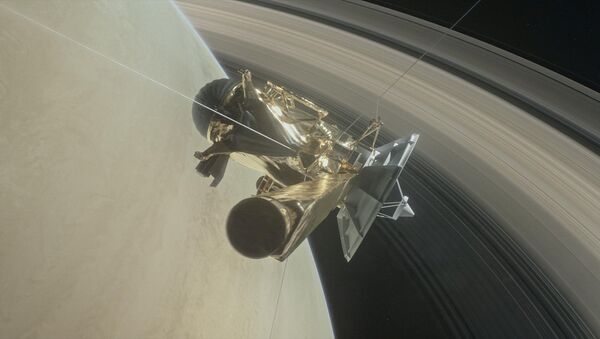“The region between the rings and Saturn is 'the big empty,' apparently,” said Cassini Project Manager Earl Maize of NASA's Jet Propulsion Laboratory in Pasadena, California.
“Cassini will stay the course, while the scientists work on the mystery of why the dust level is much lower than expected,” he added.
Recently, Cassini officially began the final phase of its life, when it met with Titan on April 22 for the last time. The coming to the Saturn’s satellite aided the probe to change the flight trajectory and enter the collision course with the giant planet.
Cassini is set to burn in mid-September of this year, after having completed 22 flights through the gap between the rings and the planet.
Last Tuesday, Cassini performed its first such pirouette, by getting as close to Saturn as possible and received a lot of new scientific data on the structure of the atmosphere of the giant planet.
For additional protection of the probe, NASA oriented the main antenna of the Cassini to shield its delicate instruments from oncoming ring particles.
“The team's analysis suggests Cassini only encountered a few particles as it crossed the gap — none larger than those in smoke (about 1 micron across),” the NASA report read.
Next step for Cassini is crossing through the ring plane in a region very close to where it passed on its previous dive. As with the first finale dive, it will be out of contact during closest approach to Saturn, and is scheduled to transmit data from this dive on May 3.
The joint NASA-European Space Agency (ESA)-Italian Space Agency (ASI) unmanned Cassini–Huygens mission started in 1997 and arrived in the Saturnian system in 2004.
It sent the Huygens probe to land on Saturn's moon Titan in 2005 which captured images and sounds from the alien lunar surface.
Cassini itself then spent 12 years studying the solar system's second-largest planet, its moons and its rings from orbit. It has discovered a salty ocean on the moon Enceladus, which could sustain life, while also discovering a nitrogen and methane-rich atmosphere, which could be the basis for organic materials, on Titan, Saturn's largest moon.
Never miss a story again — sign up to our Telegram channel and we'll keep you up to speed!






